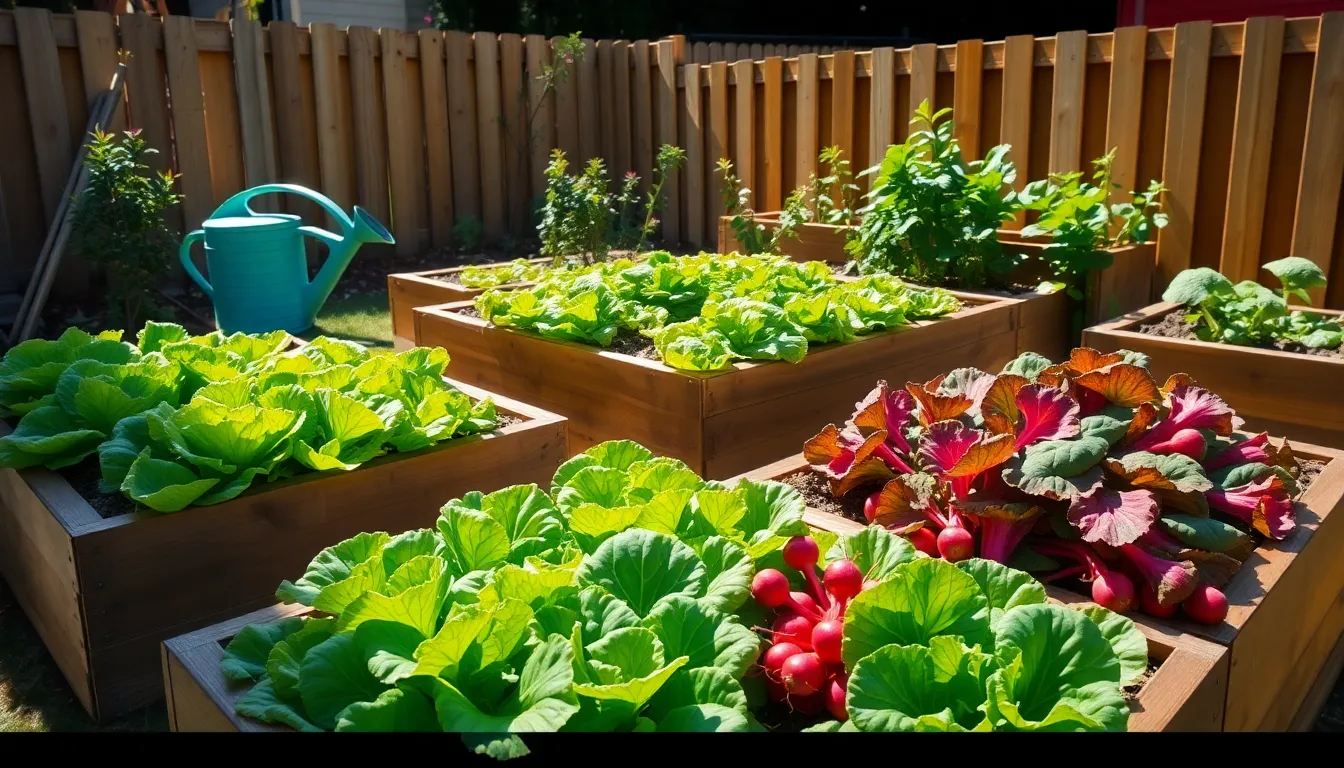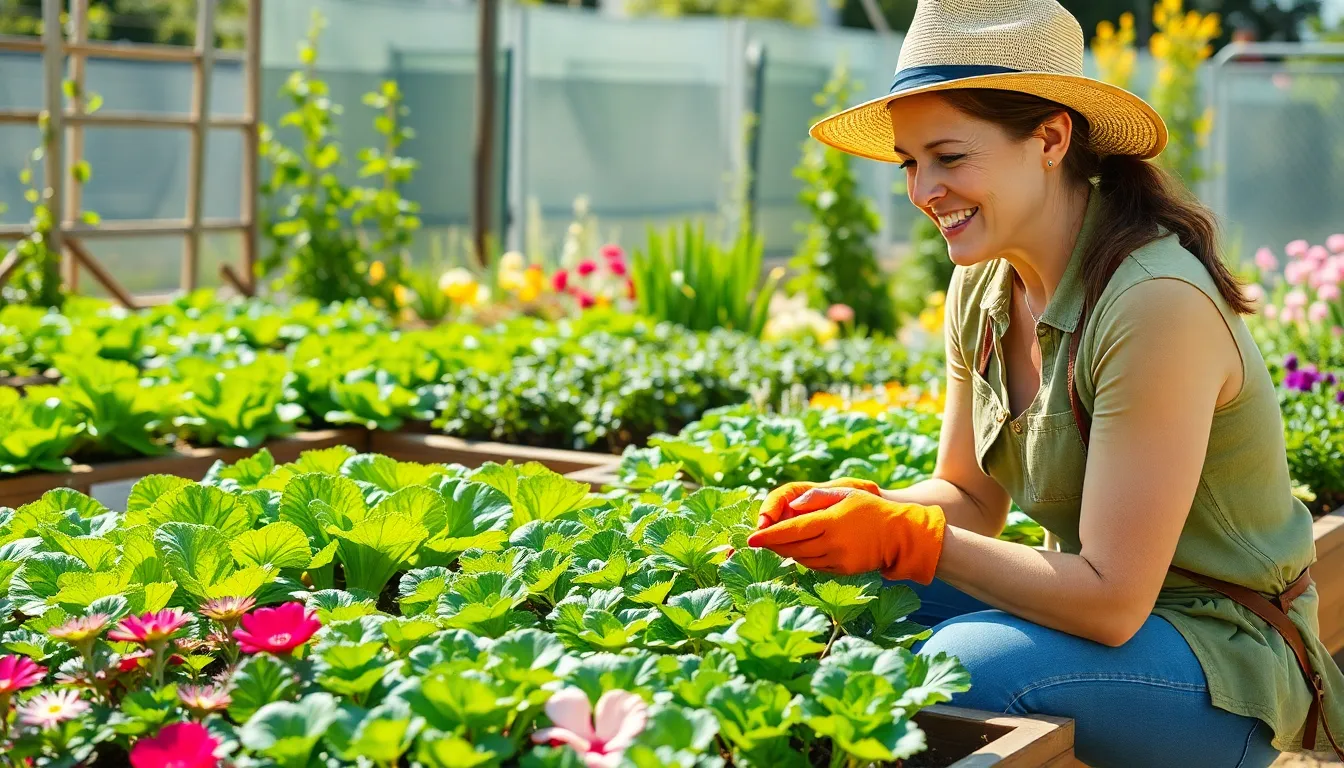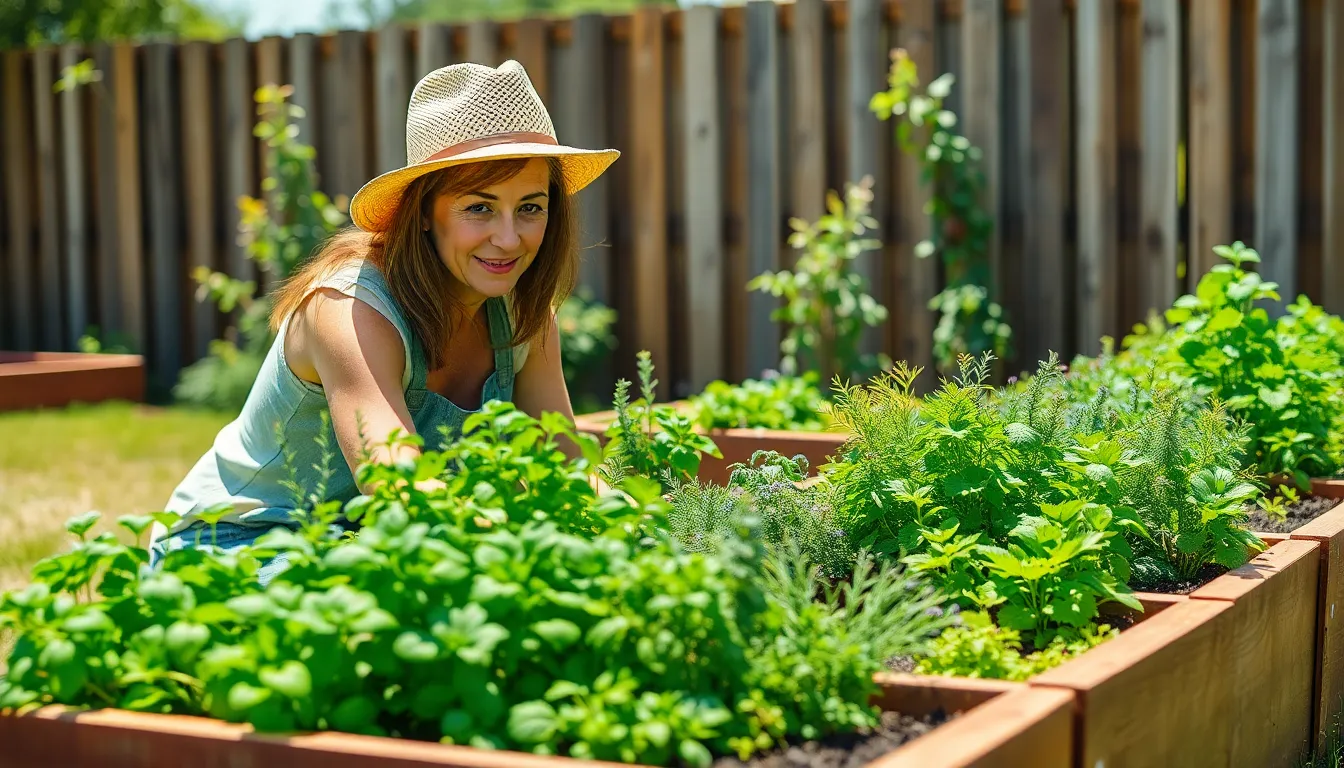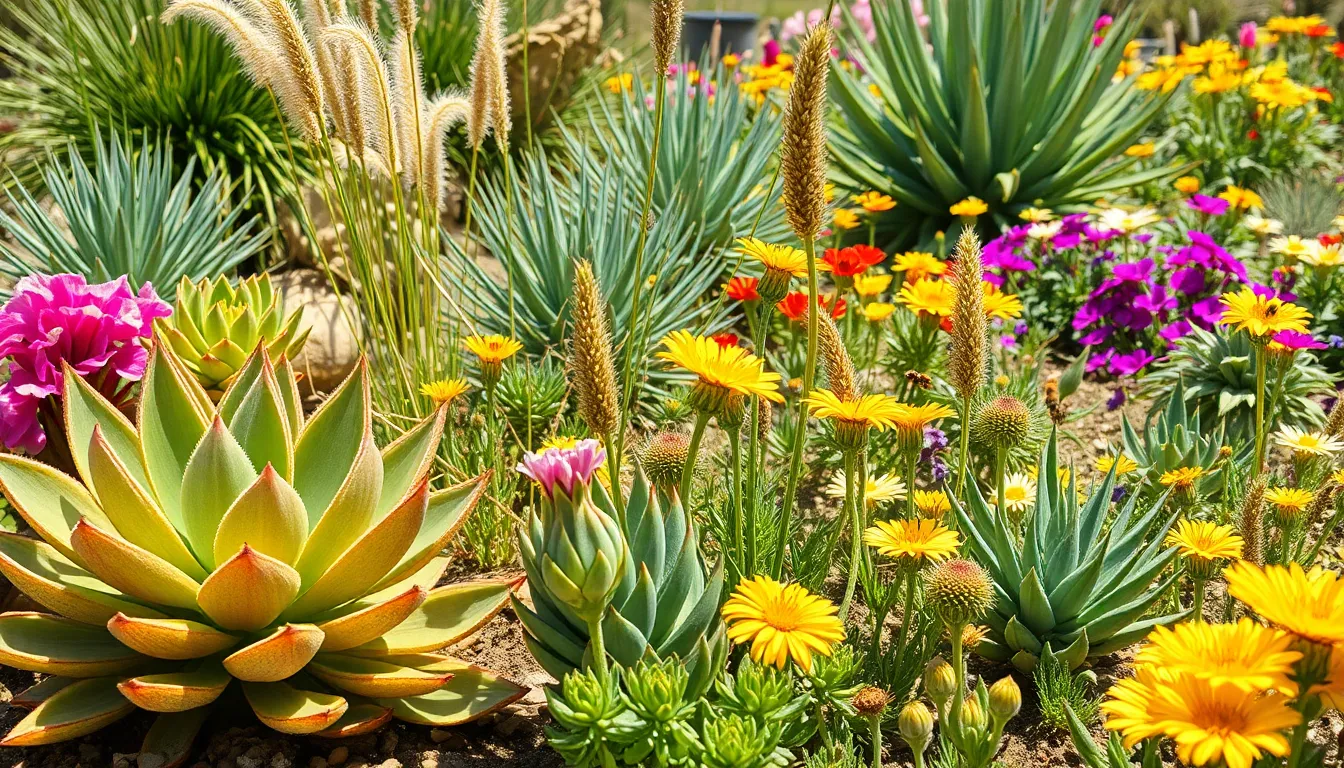Creating a low maintenance vegetable garden is a dream for many aspiring gardeners. With busy lifestyles and limited time, the idea of growing fresh produce without the constant upkeep sounds appealing. Fortunately, it’s possible to cultivate a thriving garden that requires minimal effort while still providing delicious vegetables.
By choosing the right plants and employing smart gardening techniques, anyone can enjoy the fruits of their labor without the stress. This approach not only saves time but also enhances the gardening experience, making it more enjoyable and rewarding. Whether you’re a seasoned gardener or just starting out, a low maintenance vegetable garden can be both practical and fulfilling.
Table of Contents
ToggleBenefits Of A Low Maintenance Vegetable Garden
A low maintenance vegetable garden offers multiple benefits, making it ideal for busy individuals. Time-saving techniques and reduced labor requirements enhance the gardening experience while yielding fresh produce.
Time-Saving Advantages
Time efficiency stands out in a low maintenance vegetable garden. With the right selection of crops, such as leafy greens and root vegetables, gardeners can enjoy quicker harvests. These crops often require minimal care once established. Utilizing raised beds allows for easier access and reduced weeding time. Implementing techniques like mulching limits soil evaporation and suppresses weeds, saving even more time during maintenance.
Reduced Labor Requirements
Reduced labor requirements make gardening accessible for everyone. Focusing on perennial vegetables, such as asparagus and rhubarb, eliminates the need for annual replanting. Choosing disease-resistant varieties minimizes the need for pest control efforts. Simplifying irrigation through drip systems or soaker hoses reduces frequency and intensity of watering. Adopting no-till gardening practices further lessens physical strain and preserves soil health.
Essential Planning For Your Garden

Effective planning lays the groundwork for a successful low maintenance vegetable garden. Two key aspects include choosing the right location and selecting suitable vegetables.
Choosing The Right Location
Selecting an optimal location ensures that the garden thrives with minimal intervention. Look for areas that receive at least six hours of direct sunlight daily. Assess the proximity to a water source for easy irrigation. Avoid spots with heavy foot traffic or excessive shade from trees and structures. Consider drainage as well; elevated areas often prevent water accumulation, reducing disease risk.
Selecting Suitable Vegetables
Opting for the right vegetables simplifies the gardening process. Choose fast-growing crops like lettuce and radishes for quick yields. Incorporate perennials such as asparagus and rhubarb, which require less yearly planting. Select disease-resistant varieties to further minimize maintenance and pest management. Consider companion planting; some plants naturally repel pests, enhancing overall garden health. Prioritize hardy vegetables that adapt well to local conditions for success with minimal effort.
Best Practices For Low Maintenance Gardening
Implementing best practices enhances the efficiency of a low maintenance vegetable garden. Focusing on soil preparation and efficient watering methods ensures a thriving garden with minimal effort.
Soil Preparation Techniques
Utilizing proper soil preparation techniques lays a solid foundation for plant growth. Start with soil testing, determining pH levels and nutrient content to guide amendments. Incorporating organic matter, such as compost or aged manure, improves soil structure, fertility, and drainage.
Using mulch minimizes weeds and retains moisture, further reducing labor. Combining this with raised beds allows for better drainage and easier access, which minimizes the effort needed for maintenance. Additionally, practicing crop rotation replenishes soil nutrients and reduces pest buildup, promoting plant health.
Efficient Watering Methods
Adopting efficient watering methods conserves water and lowers maintenance tasks. Drip irrigation systems deliver water directly to plant roots, significantly reducing evaporation and ensuring optimal hydration. Timing watering early in the morning or late in the evening prevents excess evaporation and root rot.
Implementing rainwater harvesting systems allows for sustainable water use; capturing runoff during rainstorms provides an eco-friendly irrigation source. Grouping plants with similar water needs together minimizes water waste and makes hand-watering more efficient. Lastly, using soil moisture sensors can help determine when to water, preventing over or under-watering while encouraging healthy plant growth.
Pest And Weed Management
Effective pest and weed management contributes significantly to maintaining a low maintenance vegetable garden. Implementing strategies for both insect control and weed management ensures a healthier garden with less effort.
Natural Pest Control Options
Utilizing natural pest control options minimizes chemical use while maintaining plant health.
- Beneficial insects: Introduce predatory insects like ladybugs and lacewings. These insects control aphids and other pests by feeding on them.
- Neem oil: Apply neem oil to deter various pests. This natural pesticide disrupts the life cycle of insects without harming beneficial organisms.
- Garlic and pepper sprays: Create home remedies using garlic or hot pepper. Spraying these solutions can repel many common garden pests.
- Companion planting: Planting marigolds alongside vegetables helps deter nematodes and other pests. Strong-smelling plants often repel insects while attracting beneficial species.
- Row covers: Use lightweight fabric row covers to physically block pests from accessing plants. Row covers provide a barrier against larger pests while allowing sunlight and moisture to penetrate.
Weed Prevention Strategies
Implementing effective weed prevention strategies reduces labor and enhances garden productivity.
- Mulching: Apply a thick layer of organic mulch around plants. Mulch suppresses weeds, retains moisture, and enriches the soil as it decomposes.
- Cover crops: Grow cover crops like clover during off-seasons. Cover crops improve soil health and smother weed growth.
- Landscape fabric: Use landscape fabric to create a weed barrier. This fabric allows water and nutrients to pass while blocking weed development.
- Consistent maintenance: Remove weeds early and regularly. Pulling weeds before they seed minimizes future weed problems and keeps them manageable.
- Soil health: Maintain healthy soil through organic amendments. Healthy soil promotes strong plant growth, allowing vegetables to outcompete weeds for resources.
Seasonal Considerations
Understanding seasonal patterns ensures optimal growth in a low maintenance vegetable garden. Different seasons require unique planting techniques and harvesting methods to fully benefit from fresh produce.
Planting In Different Seasons
Planting vegetables aligns with the seasons to maximize growth.
- Spring: Plant fast-growing crops like peas, lettuce, and radishes. These crops thrive in cooler temperatures and mature quickly.
- Summer: Focus on heat-tolerant varieties such as tomatoes, peppers, and zucchini. These crops require consistent watering and benefit from full sun exposure.
- Fall: Plant cool-season crops like kale, broccoli, and carrots. These vegetables can withstand light frost and often improve in flavor as temperatures drop.
- Winter: Consider overwintering crops like garlic and certain leafy greens. Mulching helps protect these plants from harsh weather while providing necessary nutrients as it decomposes.
Harvesting Tips For Success
Successful harvesting contributes to sustained vegetable growth and yields.
- Timing: Harvest vegetables at their peak ripeness. For example, tomatoes should be picked when fully colored but still firm.
- Regular Checks: Inspect plants frequently. This practice helps identify ready-to-harvest crops and prevent overripening.
- Gentle Handling: Use sharp tools to minimize damage when harvesting. Tugging or twisting vegetables can harm the plant and affect future growth.
- Staggered Harvesting: For continuous crops like lettuce or cucumbers, stagger planting times to ensure a consistent supply throughout the season.
Emphasizing proper planting and harvesting techniques aligns with the low maintenance gardening philosophy, leading to a productive and enjoyable experience.
Creating a low maintenance vegetable garden is an achievable goal for anyone looking to enjoy fresh produce without the burden of extensive upkeep. By focusing on the right plants and efficient gardening techniques, individuals can cultivate a thriving garden that fits seamlessly into their busy lives.
The benefits of this approach extend beyond time savings; it fosters a more enjoyable gardening experience. With careful planning and the implementation of best practices, gardeners can minimize labor while maximizing yields. This not only enhances productivity but also encourages a deeper connection with nature.
Ultimately, a low maintenance vegetable garden offers a rewarding way to embrace gardening, making it accessible and fulfilling for everyone.




